Our Summer:
The Linsoul TANGZU Zetian Wu is an excellent IEM. It’s built to be sturdy and comfortable and comes with a high-quality cable.
But other than that, this is one of the best-sounding IEMs in its price range, regardless of driver type. Therefore, Zetian Wu gets my highest recommendation and makes it to the list of best IEMs.
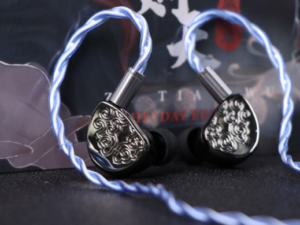
Pros:
- The bass quantity meets the quality
- Amazing Sound
- Good flat technique
- Best flat tuning ever
- Perfect IEM for piano lovers
Cons:
- Lack of treble extension
Linsoul Tangzu Zetian WU Review
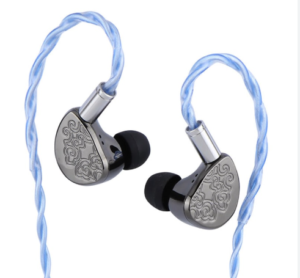
Design
The Zetian Wu’s body is made from 3D-printed black resin, but the star of the show is its aluminum faceplate color.
The flat plate is engraved with traditional Chinese patterns, and the anodized purple color gives it a gorgeous and luxurious feel.
The brand used a calming purple color, the color of the emperor, and an auspicious cloud pattern for the face cover.
This unique product will likely have its fans and detractors, but to my eyes, the colors and design speak to the royal pedigree of this pair of IEMs.
The two-pin socket is flush with the body and each shell is labeled L or R for easy identification and matches the same markings on the end of the cable.
Comfort
Unlike the large or disturbingly long body shapes of some of the current flat IEM competitors, the Zetian Wu’s soft shell fits easily into my average-sized ears.
Positioned horizontally, they are ultra-light (4g per earpiece) and remain comfortable even for long listening sessions.
There is one small vent, but this doesn’t seem to compromise passive isolation, and combined with a good fit, the Wu makes a good choice for commuting.
Sound
The first thing to note is that these women require more drive power than your average IEM. She likes the more powerful source despite its low impedance (16Ω) and 100dB sensitivity.
There is no need for anything extreme. A round DAC or DAP will do the trick.
Zetian Wu has a fairly linear sound signature. The mids and treble are fairly neutral, but the bass is somewhat boosted.
The end result is a sound that is both mature and attractive and one that always maintains composure.
This is a versatile IEM that works well across all music genres. She can provide powerful bass to hip-hop and electronic music, as well as subtle harmonics to classical pieces and everything in between.
Base
In the typical 2022 style, Zetian Wu favors the sub-bass and puts less energy into the mid-bass.
She can make thunderous noises when she needs to, but she uses the same tight control as her magnetic screwdriver for her known flat planes.
The mid-bass is less impactful, but tight and fast. It’s closer to neutral and lighter in quantity. So the mid-bass doesn’t interfere with the midrange, but the slow bass bleeds out a bit, lending warmth to the low-mids.
She’s not as aggressive, but I would have preferred a little less sub-bass and more punch in the upper bass. However, even if the tonal balance is not ideal, there is no denying that it is a high-quality bass.
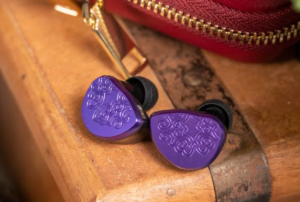
Midrange
Zetian Wu’s midrange is close to neutral in terms of color and forwardness. Depending on the music genre, it can feel a bit recessed, especially on old-school hip-hop tracks with a lot of 808 sub-bass kicks.
What I really like about the mids is the natural weight of the notes. Transients are fast but rounded enough to sound organic and lifelike. The vocals are clear yet rich.
The richness of the male voice and the vitality of the female singer are enough to grab your attention.
Even as he raises his voice, Zetian Wu maintains his composure. She doesn’t scream or have snot.
Wu Zetian dominates the midrange with effective governance that delivers optimal performance. At least not if you don’t have a strong sub-bass.
Treble
Perhaps Zetian Wu’s most impressive trait is its high notes. It’s clear and detailed, and the treble is incredibly smooth and consistent. Warmth was added to the natural tone to create a natural tone.
Zetian Wu’s high notes may lack sparkle, but they are airy and refreshing. Expansion is great and the brilliance of hi-hats and cymbals floats into the ether without clipping.
You can turn up the volume on your Zetian Wu without fear of sibilance or sizzle. Her voice is clear and light, but never shrill.
Performance
The attack speed is better than the control, but that doesn’t mean the WU is too resonant or uncontrolled, it does have a soft sustain release that steals a bit of sharpness as if it had a 0.00000001% blur effect to make the macro resolution softer. -Creamy….
This is more evident in the lows and midrange than in the lows and highs, which justifies helping the WU scale nicely with clean sources, such as the SMSL SU9+SH9 THX amplifier, which improves attack timing clarity.
The higher-than-average resolution is not at the level of Tinhifi P1plus, for example. Ultimate black background, not clean.
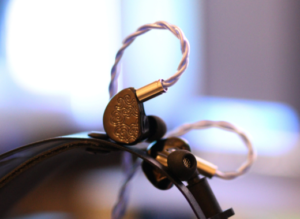
This explains why WU is so versatile and tolerant of music types, showing its true talent with its HD flac clear recordings.
However, WU dynamically extracts sound layers and displays them holographically, so you never feel like there’s a lack of detail or sound information.
Spatiality is something that is a bit difficult for me to understand. Is the sound layer too thick to make it feel that wide and deep?
I mean, while it’s nice that it’s tall without the sound getting out of your head, the width is average and not a disaster and the depth is more of an issue for me, but at the same time,
it tends to push the music in your direction and never feels distant. You are actually very close to the musician stage with WU.
It’s not like there’s a tough middle ground as if we have the best ticket venues for all your favorite artists!
Thankfully, imaging is more than decent, even if it’s presented in a slightly compressed manner on busy tracks. This can maintain enough dynamic layering and transparency to avoid confusing mud.
But it’s not these types of IEMs that suddenly deliver absolute audibility and magnify instrument placement with razor-sharp clarity.
It requires a bit of concentration and you’ll be rewarded with very realistic instrument placement in limited space. Separation is more about differences in the loudness of the instruments rather than static.
The album I’m listening to now by the jazz trio Dieter Ilg “Parsifal” has the piano centered well, taking up the front of the stage, the bassist on the right and the sound projected slightly to the left, and the drummer in the left center.
The kick drum and metallic percussion are on the right haha… Okay, I hope you understand what I mean. I need to focus on delving into rich musical spatiality and be rewarded with realistic positioning.
Conclusion
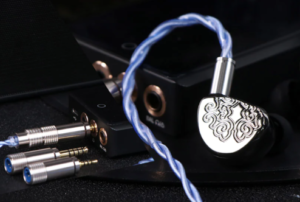
Finally, a solid competition among affordable planar magnetic IEMs is taking shape. No longer new, some have evolved into viable competitors in their price range.
The Tangzu Zetian Wu isn’t just a good planar magnetic IEM. Regardless of driver type, they offer a compelling value proposition compared to similarly priced pairs of IEMs.
Studio monitors don’t. Enhanced sub-bass, flat midrange, and a hint of treble create a sound signature most appealing to modern pop listeners.
However, Zetian Wu’s laid-back tone works well with a variety of music genres, and buyers will enjoy listening pleasure regardless of their tastes.
The accessories that come with it are very nice. The cable, case, and ear-tips are all top quality. The body is light, comfortable, and fits well in the ear. The purple color is really cool.
Also read: Linsoul 7HZ Legato Review
